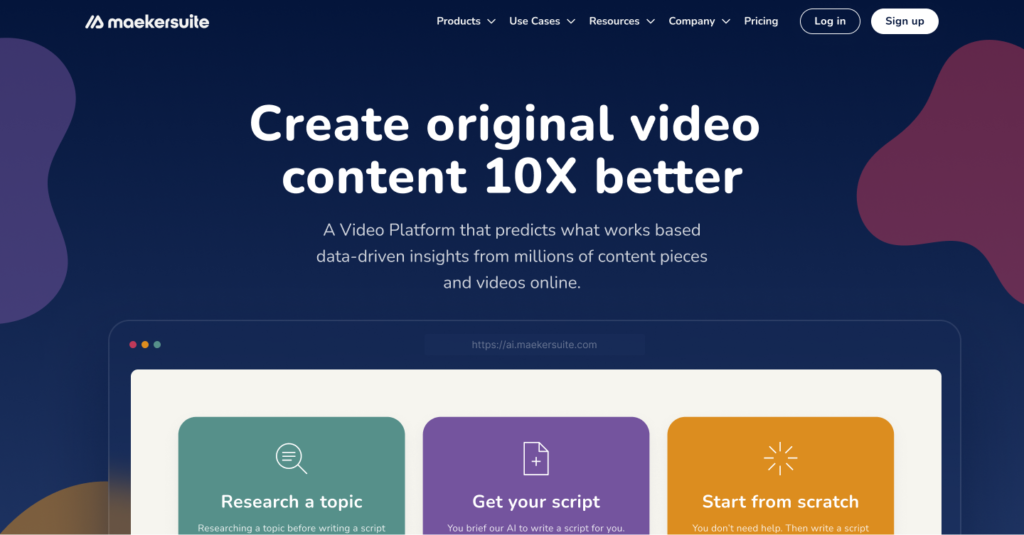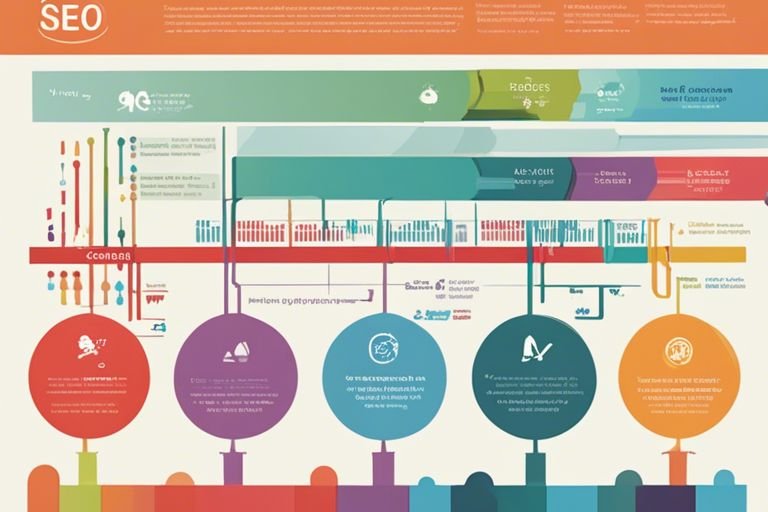Are you struggling to effectively use social media marketing to boost your online sales? If so, you’re not alone. With the ever-changing landscape of social media, it can be overwhelming to navigate the best strategies for increasing your online sales. However, with the right approach, you can utilize social media to dramatically grow your online sales and reach a wider audience. In this blog post, we will discuss the key tactics you can implement to make the most out of your social media marketing efforts and ultimately see a significant increase in your online sales. First and foremost, it’s crucial to have a strong understanding of your target audience and which social media platforms they are most active on. By tailoring your content to suit the preferences of your audience and focusing your efforts on the platforms where they are most engaged, you can maximize your reach and drive more traffic to your online store. Additionally, utilizing engaging visuals, such as high-quality images and videos, can significantly enhance the effectiveness of your social media marketing efforts and capture the attention of potential customers. Stay tuned as we delve into the dos and don’ts of social media marketing for boosting online sales.
Understanding Your Audience
For a successful social media marketing strategy, it is crucial to have a solid understanding of your target audience. This involves not only identifying the demographics of your potential customers but also analyzing their behavior and preferences.
Identifying Target Demographics
When it comes to social media marketing, knowing the demographics of your audience is essential. Start by gathering data on the age, gender, location, income level, and interests of your target customers. This information will help you tailor your content and messaging to better resonate with your audience. Understanding the demographics of your audience will also guide your decisions on which social media platforms to focus on and the type of content that will be most effective in reaching them.
Analyzing Customer Behavior and Preferences
It’s equally important to analyze the behavior and preferences of your target audience. This involves studying their online activities, such as the type of content they engage with, the times they are most active on social media, and the devices they use to access it. You can use tools like Google Analytics, social media insights, and customer surveys to gather this valuable information. By understanding how your audience interacts with social media, you can tailor your marketing approach to better engage and convert them into customers.
Understanding your audience and their demographics, behavior, and preferences will allow you to create a more personalized and effective social media marketing strategy. By catering to the specific needs and interests of your audience, you can significantly improve your online sales.
Selecting the Right Social Media Platforms
Some businesses make the mistake of spreading themselves too thin across multiple social media platforms rather than focusing on the ones that will actually reach their target audience. It’s important to carefully select the right social media platforms that align with your business goals, target audience, and the type of content you can create and share.
Comparing the Major Social Media Channels
When comparing the major social media channels, it’s essential to understand the unique features and demographics of each platform. Here is a breakdown of the major social media channels and their key characteristics:
| Platform | Key Characteristics |
| Large user base, versatile ad targeting options, great for building brand awareness and engagement. | |
| Visual platform, popular among younger demographics, ideal for showcasing products and lifestyle content. | |
| Real-time updates, effective for customer service and building brand personality. Limited character count for posts. | |
| Professional networking site, suitable for B2B marketing, thought leadership content, and industry connections. | |
| Highly visual platform, ideal for sharing and discovering new ideas, mainly used by women for DIY and lifestyle inspiration. | |
| TikTok | Short-form video content, popular among Gen Z, provides an opportunity for viral content and brand challenges. |
Matching Platforms with Business Goals and Audience
When it comes to matching platforms with your business goals and audience, it’s crucial to consider the type of content you want to create and share. For instance, if your target audience consists of millennials or Gen Z, platforms like Instagram and TikTok might be more effective due to their visual and video-oriented nature. On the other hand, if your business caters to professionals and B2B clients, platforms like LinkedIn and Twitter might be more suitable for sharing industry insights and thought leadership content. Understanding your audience and their preferred social media platforms will help you tailor your marketing strategy to effectively reach and engage with them.
Creating Compelling Content
Despite the vast amount of content on social media, it is still possible to stand out and capture the attention of your target audience. Creating compelling content is crucial to gaining followers, driving engagement, and ultimately boosting online sales.
Types of Content that Drive Engagement
When it comes to social media marketing, it’s essential to produce various types of content to keep your audience engaged and interested. Some types of content that are known to drive engagement include:
- Visual Content: Images, videos, and infographics are highly shareable and can quickly catch someone’s eye as they scroll through their social media feed.
- Educational Content: Providing valuable information or tips related to your products or industry can position your brand as an authority and attract followers looking for expertise.
- User-Generated Content: Encouraging your followers to create and share their own content featuring your products can create a sense of community and authenticity around your brand.
- Interactive Content: Polls, quizzes, and contests can engage your audience and encourage them to interact with your brand.
- Behind-the-Scenes Content: Giving your audience a glimpse of what goes on behind the scenes at your business can humanize your brand and build trust with your followers.
Knowing which types of content resonate with your audience is key to developing a successful social media marketing strategy.
Crafting Messages that Convert Followers into Customers
When it comes to converting your social media followers into customers, the messages you craft play a crucial role. Your content should be designed to educate, entertain, and inspire your audience while subtly guiding them towards making a purchase. Always keep your call-to-action clear and compelling, making it easy for your audience to take the next step towards becoming a customer. By providing valuable content and offering solutions to your audience’s pain points, you can build trust and credibility, ultimately leading to increased online sales.
Leveraging Paid Social Advertising
After you have established a strong organic presence on social media, it’s time to consider leveraging paid social advertising to further boost your online sales. Paid social advertising allows you to reach a wider audience, target specific demographics, and drive more traffic to your online store. This chapter will explore the fundamentals of social media advertising and provide tips on optimizing ad spend for maximum return on investment.
Fundamentals of Social Media Advertising
When it comes to social media advertising, it’s important to understand the fundamentals before diving in. Start by identifying your target audience and the social media platforms they frequent the most. Each platform has its own advertising options, so make sure to choose the ones that align with your target audience and business goals. Whether it’s Facebook, Instagram, Twitter, or LinkedIn, it’s essential to create compelling ad content that resonates with your audience. You want to capture their attention and encourage them to take action, whether it’s making a purchase, signing up for your newsletter, or visiting your website.
Optimizing Ad Spend for Maximum Return on Investment
When it comes to paid social advertising, optimizing your ad spend is crucial for maximizing your return on investment. It’s important to track and analyze the performance of your ads to understand what’s working and what’s not. This allows you to allocate your budget more effectively and make data-driven decisions. Additionally, consider A/B testing different ad creatives, targeting options, and calls-to-action to see what resonates best with your audience. By continually optimizing your ad campaigns, you can ensure that you are getting the most out of your advertising budget and driving the highest possible ROI for your online sales.
By effectively leveraging paid social advertising, you can maximize your online sales and reach a larger audience. Keep in mind the fundamentals of social media advertising and constantly optimize your ad spend to ensure that you’re getting the best return on investment. With the right approach and strategy, paid social advertising can significantly boost your online sales and help you achieve your business goals.

Engaging with Your Audience
Now that you’ve established your presence on social media and built a following, it’s crucial to engage with your audience in a meaningful way. This is where you have the opportunity to turn followers into loyal customers and advocates for your brand. Effective engagement can lead to increased online sales and brand loyalty.
Best Practices for Customer Interaction
When interacting with your audience on social media, it’s important to be responsive and genuine. Respond to comments, messages, and mentions promptly, and personalize your responses whenever possible. Show that you value your customers and their feedback by addressing their concerns and questions in a professional and empathetic manner. Additionally, make use of features such as polls, Q&A sessions, and live video to encourage interaction and gather feedback from your audience. By actively engaging with your customers, you’re not only building a stronger connection with them, but also gaining valuable insights that can inform your marketing strategy and product offerings.
Handling Negative Feedback and Crisis Management
Despite your best efforts, negative feedback or a crisis situation may arise on social media. How you handle these situations can have a significant impact on your online sales and brand reputation. When faced with negative feedback, it’s important to address the issue publicly and offer a solution or apology. Ignoring or deleting negative comments can further damage your brand image. Show that you’re willing to take responsibility and make things right. In the case of a crisis, such as a product recall or public relations issue, transparency and timely communication are key. Be honest about the situation, provide regular updates, and reassure your audience that you’re taking steps to resolve the issue. By handling negative feedback and crisis situations effectively, you can demonstrate your commitment to customer satisfaction and maintain the trust of your audience.
Measuring and Analyzing Performance
However, simply executing social media marketing campaigns is not enough to drive online sales. It is crucial to measure and analyze the performance of your social media activities to understand their impact on your sales and overall business objectives. By using the right key performance indicators (KPIs) and monitoring tools, you can gain valuable insights into the effectiveness of your social media marketing efforts.
Key Performance Indicators (KPIs) for Social Media Success
When evaluating the performance of your social media marketing, there are several key performance indicators (KPIs) that you should pay attention to. These KPIs can provide you with a clear picture of how well your social media efforts are contributing to your online sales. Some of the most important KPIs for social media success include engagement metrics such as likes, shares, comments, and click-through rates, as well as conversion metrics like the number of leads generated and actual sales driven through social media channels. By tracking and analyzing these KPIs, you can identify which social media platforms and content strategies are most effective in driving sales, allowing you to optimize your marketing efforts accordingly.
Tools for Monitoring and Reporting
To effectively measure and analyze the performance of your social media marketing activities, it is essential to use the right tools for monitoring and reporting. There are various social media analytics platforms and tools available that can help you track and measure the performance of your social media campaigns. These tools provide valuable insights into audience demographics, engagement metrics, and conversion data, allowing you to assess the impact of your social media marketing on your online sales. By utilizing these tools, you can make informed decisions about your social media marketing strategies and ensure that you are effectively using social media to boost your online sales. In conclusion, measuring and analyzing the performance of your social media marketing activities is essential for driving online sales. By focusing on key performance indicators (KPIs) for social media success and utilizing the right monitoring and reporting tools, you can gain valuable insights into the effectiveness of your social media efforts and make data-driven decisions to optimize your marketing strategies. This approach will ultimately help you maximize the impact of social media on your online sales and overall business success.

Adjusting Your Strategy
To effectively use social media marketing to boost online sales, you must be willing to adjust your strategy as needed. This means continuously monitoring the performance of your campaigns and making changes based on the results. Here are some key areas to focus on when adjusting your social media marketing strategy.
Keeping Abreast of Social Media Trends
Keeping up with the latest social media trends is essential for staying ahead of the competition and reaching your target audience. Platforms and algorithms are constantly evolving, and what worked yesterday might not work today. You need to stay informed about the latest trends, features, and best practices. This can involve following industry blogs, attending webinars, and keeping an eye on your competitors. By staying informed, you can adapt your strategy to take advantage of emerging trends and ensure that your content remains relevant and engaging.
Continuous Improvement Through A/B Testing and Feedback
Continuous improvement is crucial for maximizing the effectiveness of your social media marketing efforts. A/B testing allows you to compare different versions of your ads, posts, or landing pages to see which performs best. By testing variables such as images, copy, and calls-to-action, you can identify the most effective elements and refine your strategy accordingly. Additionally, seeking feedback from your audience can provide valuable insights into their preferences and behavior. Encourage comments, conduct surveys, and monitor social media analytics to understand what resonates with your audience and make data-driven improvements to your strategy.
By continuously adjusting and refining your social media marketing strategy, you can stay ahead of the curve and maximize your online sales. Remember, the digital landscape is constantly evolving, so it’s essential to remain agile and adaptable. Embracing change and actively seeking out new opportunities will set you apart in the competitive world of social media marketing.
FAQ
Q: What is social media marketing and how can it boost online sales?
A: Social media marketing involves using social networking platforms to promote a product or service. By creating engaging content and interacting with potential customers, businesses can effectively reach a large audience and drive traffic to their online sales platforms. This can ultimately lead to increased sales and revenue.
Q: What are some effective strategies for social media marketing to boost online sales?
A: Some effective strategies for social media marketing include identifying the target audience, creating high-quality and visually appealing content, utilizing relevant hashtags, collaborating with influencers, running targeted advertising campaigns, and engaging with followers through comments and direct messages. It’s also important to track and analyze the performance of your social media efforts to understand what resonates with your audience and makes the most impact on sales.
Q: How can I measure the effectiveness of my social media marketing efforts in boosting online sales?
A: Measuring the effectiveness of your social media marketing efforts can be done through various metrics such as website traffic, conversion rate, click-through rate, engagement rate, sales attribution, and customer acquisition cost. By using analytics tools provided by social media platforms and other third-party tools, you can track these metrics over time and understand the impact of your social media marketing on your online sales. It’s important to continuously analyze the data and make adjustments to your strategy as needed to optimize your results.








